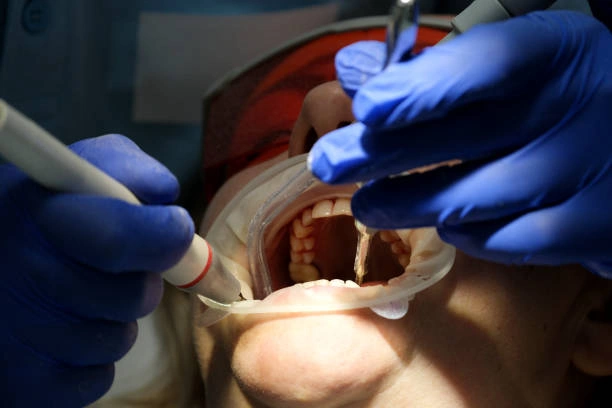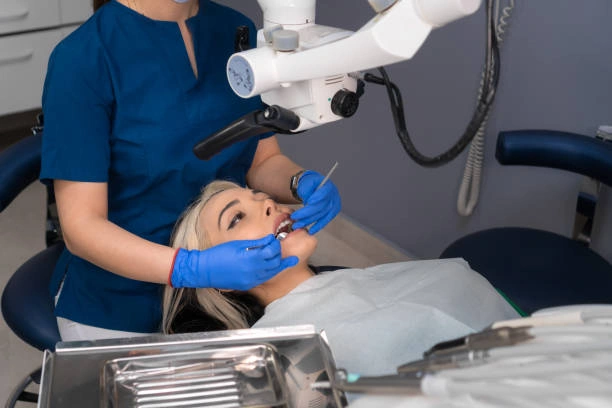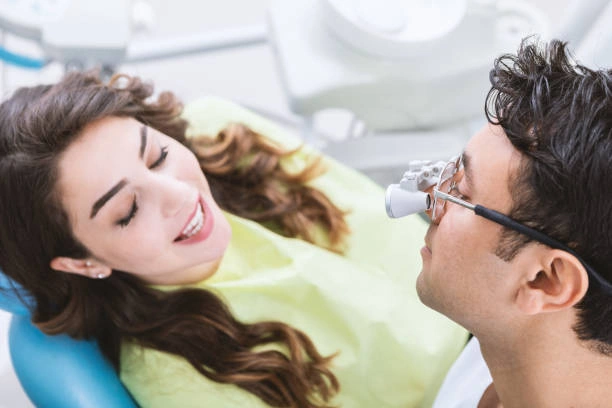Types of Dental Veneers and the Best Options
Cosmetic dental veneers are among the most advanced and in-demand aesthetic dentistry techniques in modern clinics. Achieving a Hollywood smile has become an attainable dream through simple sessions and stunning results.

Types of Dental Veneers and the Best Options
The types of dental veneers and the best ones vary according to each patient’s needs and the technical features of each type. They include ceramic veneers, instant cosmetic veneers, and no-prep veneers — offering a wide range of treatment choices for anyone seeking a perfect smile.
In this article, we’ll review the types of dental veneers and the best options, explain the features of each type, how to choose the most suitable one, discuss the benefits of no-prep veneers, and answer questions about odors and possible side effects — helping patients make an informed and confident decision before undergoing any aesthetic or medical procedure.
The Best Type of Dental Veneers
When searching for the best type of dental veneers, the first step is to define the goal of treatment:
Is it to achieve a uniform tooth color? Correct small gaps? Enhance the shape of the front teeth?

The Best Type of Dental Veneers
Or treat long-term discoloration?
Here, the types of dental veneers and the best ones play a central role in selecting the right option.
The most well-known type is porcelain veneers (Veneers), typically made from medical-grade porcelain. They are the best in terms of stain resistance, stability, durability, and natural aesthetics. Porcelain veneers provide long-lasting results, often lasting more than 10 years when properly applied and maintained.
Lumineers, on the other hand, are a newer type of porcelain veneer. They are made of ultra-thin layers and can usually be applied without the need to reshape the natural tooth structure — or only minimally. They are ideal for those who want quick, painless results.
There are also composite resin veneers, made from cosmetic resin materials and used as a quick, budget-friendly solution. However, they are less resistant to staining and may require frequent touch-ups.
Choosing the best type of dental veneer should be done through a professional consultation. The dentist evaluates gum health, enamel thickness, bite strength, and whether the patient suffers from erosion, sensitivity, or functional issues requiring a customized solution.
No-Prep Dental Veneers
One of the latest developments in cosmetic dentistry is no-prep dental veneers, designed to preserve the natural tooth structure and avoid removing any enamel during placement.

No-Prep Dental Veneers
Within the context of the types of dental veneers and the best options, this innovation focuses on patient comfort, minimizing pain, and reducing the risk of sensitivity or nerve irritation.
The most famous among these are Lumineers, known for their ultra-thin design (approximately 0.2 mm thick). This allows dentists to bond them directly onto the tooth surface when the teeth are well-aligned and free of major gaps or protrusions.
No-prep veneers boost patient confidence in the results, offering a safe and effective solution without anesthesia, drilling, or long recovery periods. The procedure is also faster — usually requiring only one or two sessions compared to traditional methods that need several visits.
However, no-prep veneers are not suitable for everyone. Some dental conditions require reshaping or removing a portion of enamel for even results. Therefore, it’s essential to consult an experienced specialist to determine whether this type fits your case among the available types of dental veneers and the best options.
Do Dental Veneers Cause Bad Odor?
Many patients often ask an important question: “Do dental veneers cause bad breath?”
This concern is closely linked to the quality of materials used, the application technique, and post-procedure hygiene.

Do Dental Veneers Cause Bad Odor?
When discussing the types of dental veneers and the best ones, high-quality veneers such as porcelain and Lumineers are made from materials that resist bacterial buildup and do not cause odors — as long as they are applied correctly, with the edges sealed tightly to prevent food debris or bacteria from entering.
If the veneers are poorly fitted or if gaps exist between the veneer and the tooth, bacteria may accumulate and produce unpleasant odors. The same can happen with neglect in daily oral hygiene, such as not brushing, flossing, or using mouthwash.
In summary, professionally applied, high-quality veneers do not cause bad odor. However, poor installation, neglect, or existing gum or tooth issues may lead to odor problems that require immediate dental attention.
Side Effects of Dental Veneers
Although dental veneer technology is widely used, awareness of its risks and possible complications is crucial before deciding on treatment.

Side Effects of Dental Veneers
It’s essential to understand that the types of dental veneers and the best ones help minimize risks when planned and applied correctly by a professional. However, as with any medical procedure, there are potential drawbacks.
The main side effects of dental veneers include:
- Tooth sensitivity, especially if enamel is excessively removed.
- Gum irritation or inflammation caused by improper edge fitting or poor hygiene.
- Color changes or exposure of the natural tooth root over time due to veneer wear or gum recession.
- Difficulty restoring natural appearance if the patient later wishes to remove the veneers.
- The need for maintenance or replacement if a veneer breaks or detaches due to neglect or trauma.
Therefore, patients should always choose an experienced dentist, ensure the quality of materials used, and avoid rushing into veneer application before a full dental evaluation.
Types of Dental Veneers and the Best Options – Conclusion
In summary, the types of dental veneers and the best options form a vital part of modern cosmetic dentistry, with significant variations in results, costs, and longevity depending on the type used and the dentist’s expertise.
Whether traditional porcelain veneers, Lumineers (no-prep veneers), or temporary composite solutions, comprehensive assessment and proper planning are the foundations of success and long-lasting oral beauty.
Moreover, post-procedure care, oral hygiene, and adherence to the dentist’s advice are the keys to preserving results and avoiding future problems, odors, or damage.
Frequently Asked Questions (FAQ)
| Question | Answer |
| What are the most popular types of dental veneers? | Porcelain veneers, Lumineers (no-prep), and temporary composite veneers. |
| What is the best type of dental veneer? | Porcelain veneers are the most durable and aesthetic; Lumineers are ideal for cases not requiring tooth reshaping. |
| Can veneers be applied without tooth preparation? | Yes, for patients with well-aligned teeth and no significant gaps or protrusions. |
| Do dental veneers cause bad breath? | No, if properly applied and well-cleaned. Poor installation or neglect can cause unpleasant odors. |
| What are the potential side effects of veneers? | Tooth and gum sensitivity, veneer breakage, gum recession, or discoloration due to poor hygiene. |
| How long do veneers last? | Usually between 7–15 years for high-quality porcelain veneers; less for temporary types. |
| Can veneers be removed to return to natural teeth? | Usually not, especially if enamel was removed. Careful consideration is essential before application. |
| How much do dental veneers cost in clinics? | Prices vary by type and clinic, generally from 1000 to 4000 SAR/AED per tooth. |
